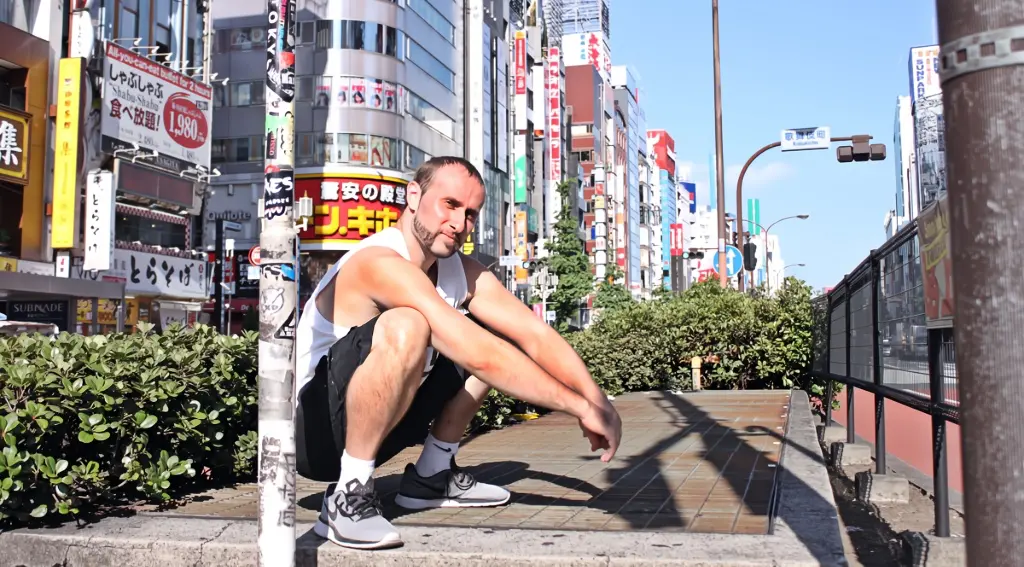The deep squat or Yogi Squat is many things. In a lot of cultures across the world, particularly in Asia, it is an afterthought. The younger Instagram fitness generation notwithstanding, in places like Vietnam and Thailand, it’s not related to exercise at all. It’s simply something that is done as part of daily life.
In stark contrast, in many western nations, the deep squat is associated with certain fitness modalities like Yoga – hence the nickname “Yogi Squat”. For the average sedentary Westerner, and even many “fit” ones, holding a deep squat can be challenging. In far too many instances, it can even be downright impossible. This is unfortunate because the deep squat has a huge benefits that contribute to healthy aging and overall quality of life as one gets older.
In the tutorial below, I will cover what the deep squat looks like and how to work towards it if you are currently unable to. I’ll also show you some more advanced routines you can do while in the deep squat position. These will unlock additional mobility benefits.
⚠️ Important
If you have poor hip mobility or have had a hip injury or hip replacement then you may have significant difficulty with performing a deep squat correctly. The same goes for any kind of knee injuries or knee replacement. You may need to proceed gradually or not at all.
Table of Contents
- What a Good Deep Squat Should Look Like
- How to Approach a Deep Squat If You Cannot Do It
- Deep Squat Routines
What a Good Deep Squat Should Look Like
Is there a “right way” to do a deep squat?
Yes and no.
The thing with the deep squat (and squats in general) is that we should think of the form along the idea of guidelines rather than strict prescriptions. The reason for that is that all of our anatomies are built different. There are not only differences between the sexes, but also among all of us as individuals. The main (but not only) difference that affects how we squat is our hips. For an excellent read on this topic, I recommend checking out this article from the guys over at Squat University.
Having said that, I have included some general guidelines below.
FEET
Some individuals will be able to point their toes completely forward, while others will have theirs angled slightly outward. Also, the space between the feet can differ as well. Some will be able to maintain a more narrow foot position, while others will need to go a little wider. The main constant and strict rule with feet is that they should be firmly planted on the floor, with more of one’s bodyweight being shifted onto the heels.
KNEES
Generally speaking, the knees should not go past the toes. If someone was looking at you from the side, your knees should be either above your toes or slightly behind them, but not past them.
BACK
Ideally, you’ll want to maintain a neutral spine, although this can be very difficult for some – myself included. I find that going a little wider with your foot stance and bringing your body forward (shifting forward with the hips) more helps with being able to maintain a good torso posture.
ARMS
This is a huge preference component to some extent, although depending on what you do with them may alter other body mechanics within the squat. I recommend putting your hands in prayer pose with the elbows flaring out so that they make contact with your inner thighs. You can also rest them on top of your knees or go monkey style and let them hang in front of you.
How to Approach a Deep Squat If You Cannot Do It
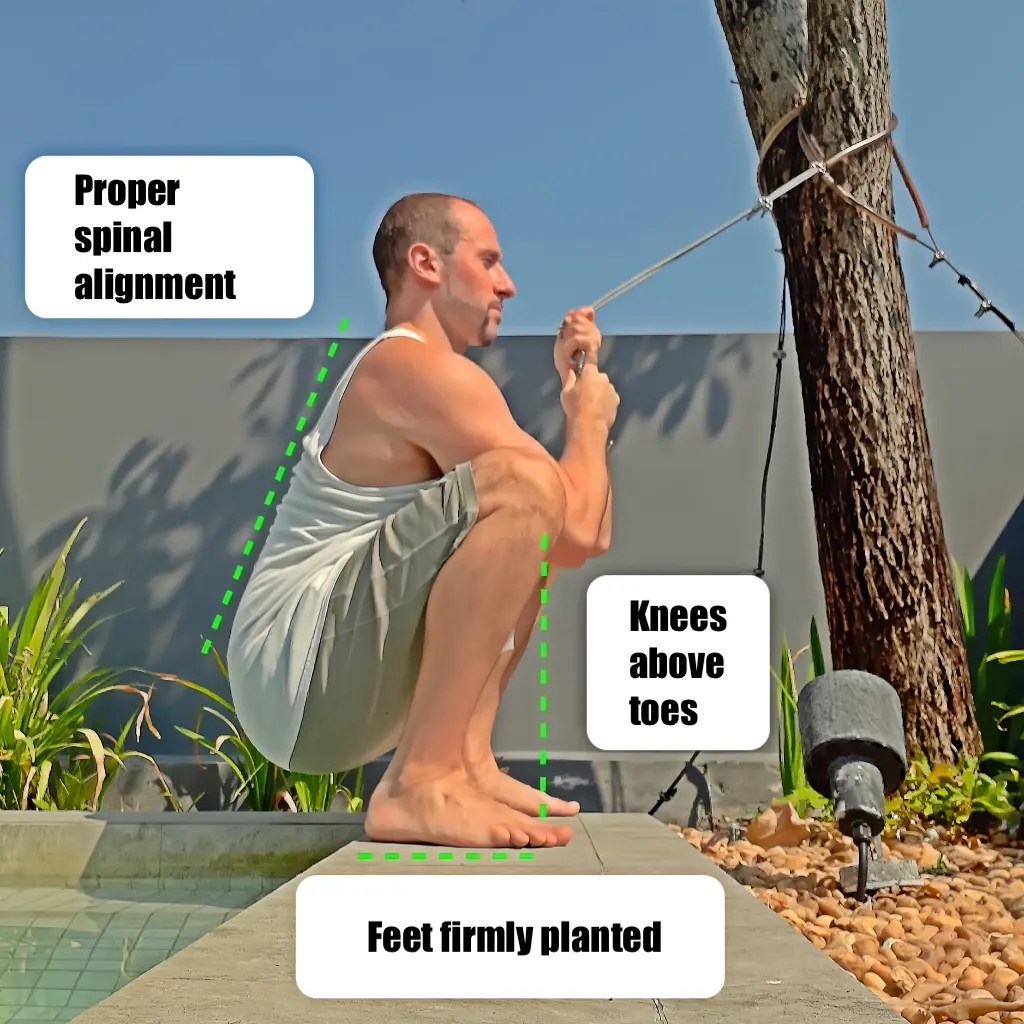
Using a rope for assistance
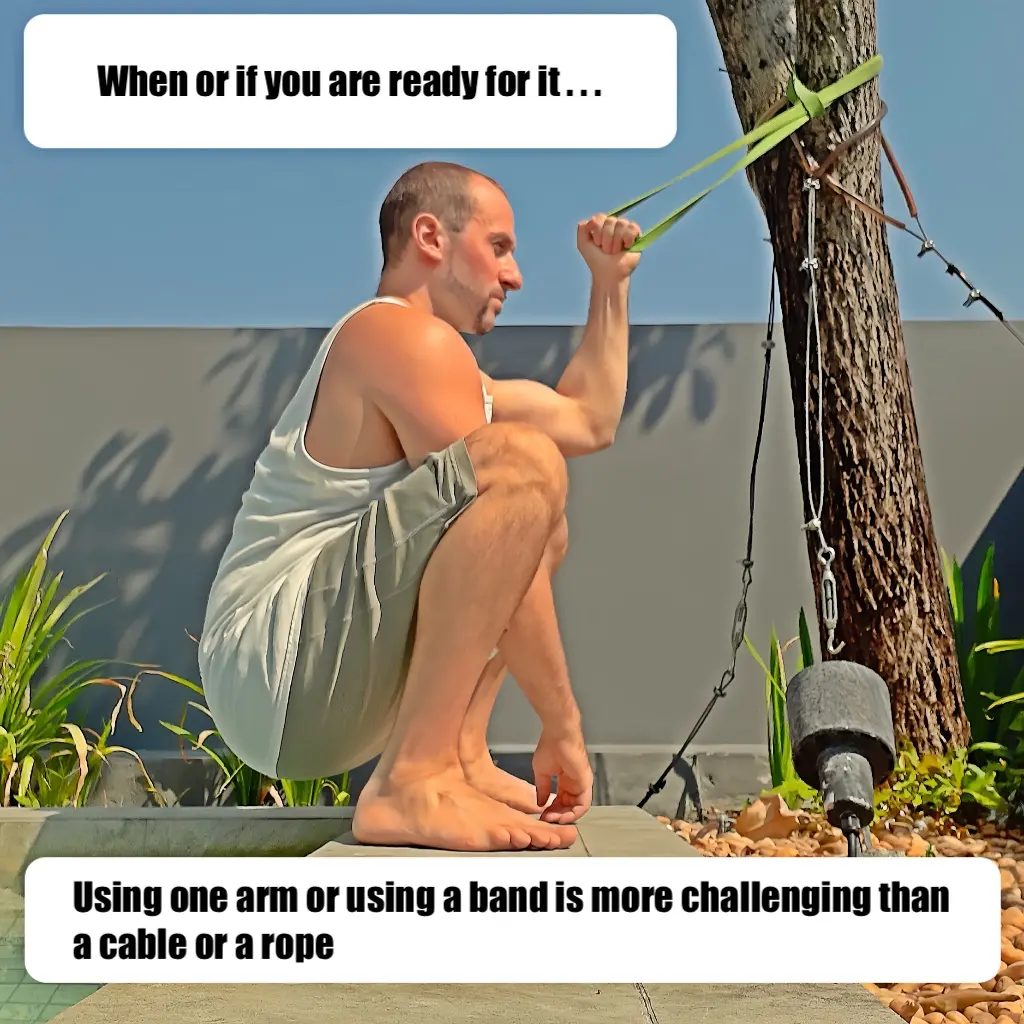
Using a resistance band for support
I almost didn’t want to write this section because this is such an individual thing that realistically it is something that should be addressed on a one-on-one, case-by-case basis. There could be so many different reasons why someone cannot do a deep squat that trying to give blanket advice over the internet probably isn’t the best idea.
The reason I ultimately decided to write at least a little something about it is because I know there will be many people out there reading this who are interested in incorporating deep squats into their fitness or general good health practice, but are currently unable to do so.
One thing that I’ve found to be helpful with assisting people to get into a deep squat is to use either a resistance band or a piece of rope / cable to hold onto. Depending on how low the individual can get, another option is to hold onto something stable in front of the body. A towel or band can also be attached to a stable object in front and held for stability.
The above can help to some extent but in most cases will have to be combined with other mobility work to address underlying issues. Above all, safety is always the number one concern and while the deep squat is excellent for your health if you can already get into it, it can be dangerous to try to force your way into it if you are unable to.
Know your limits and ideally, if you can afford it, seek the guidance of a trained professional. If you go to your local gym, please know who you are working with. Getting a personal training certificate isn’t that hard. Unfortunately, there are a lot of certified but not-so-great trainers out there so don’t be afraid to ask questions about a trainer’s experience before you begin working them.
Deep Squat Routines
If you are able to get into a deep squat position with relatively decent form, then you can begin exploring some routines that will give you added benefits. These range from simple things like staying in the deep squat for time, to more added value stuff like performing other stretches within the deep squat.
Deep Squat Routine #1
The first routine is straightforward:
Get into a deep squat and attempt to stay in it for at least 10 consecutive minutes.
If this is too difficult then start out with 5 minutes.
Then take a 2 minute break and go back down for another 5 minutes.
Assuming this is still too challenging, then divide up the 10 minutes however you need to – but aim for a cumulative 10 minutes.
If you need to chop up the 10 minutes then your goal should be to progressively lower the amount of sets it takes you to accomplish the cumulative 10.
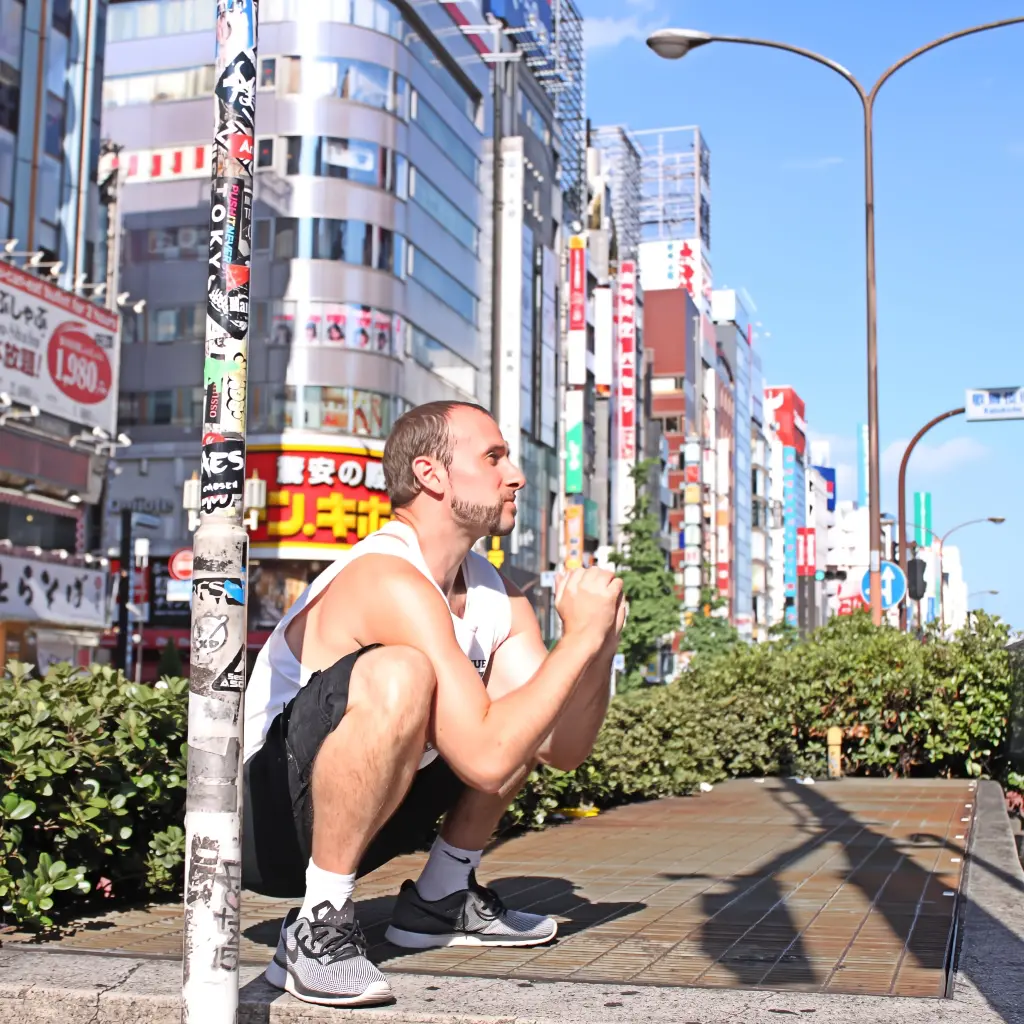
Do it until you can eventually do the entire duration in one fell swoop.
Deep Squat Routine #2
Get into a deep squat and place your hands into a prayer position so that your triceps make contact with the inside of your thighs. From the prayer hand pose, attempt to lower your hands downward so that your arms begin to push out.
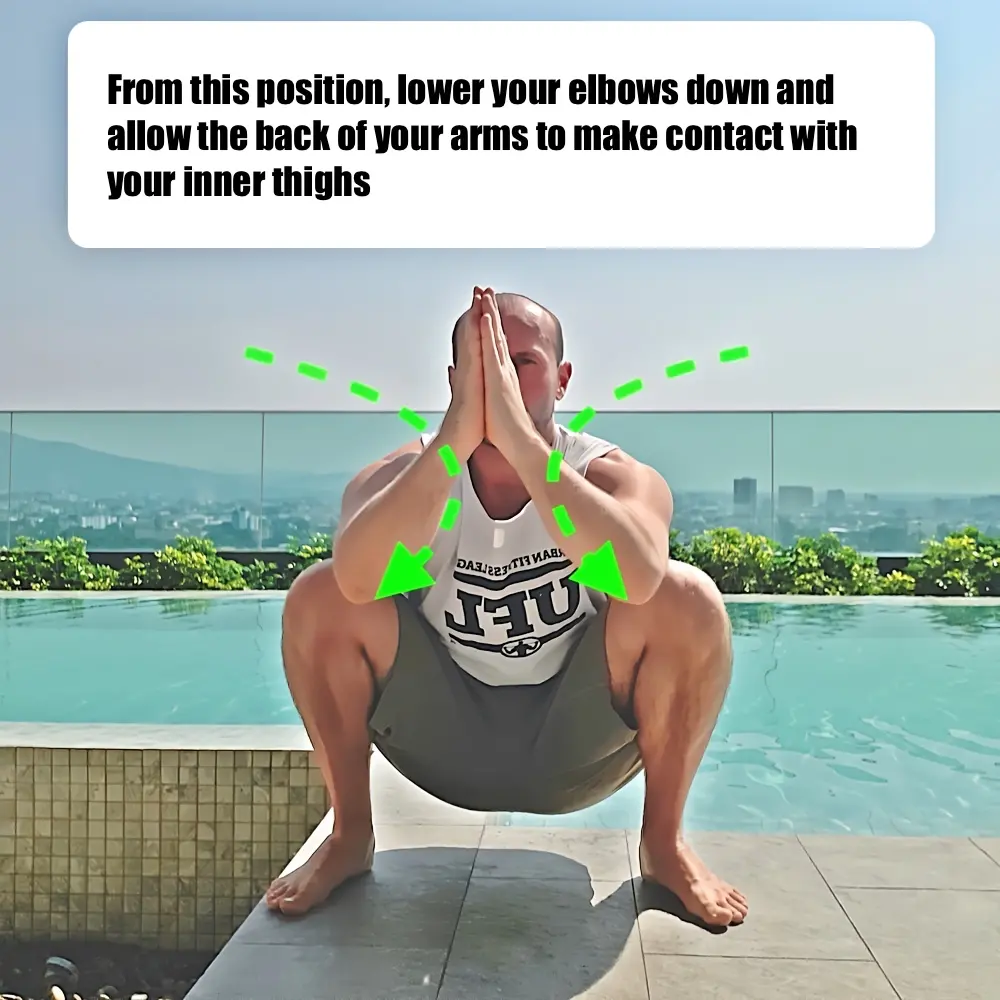
Prayer position start
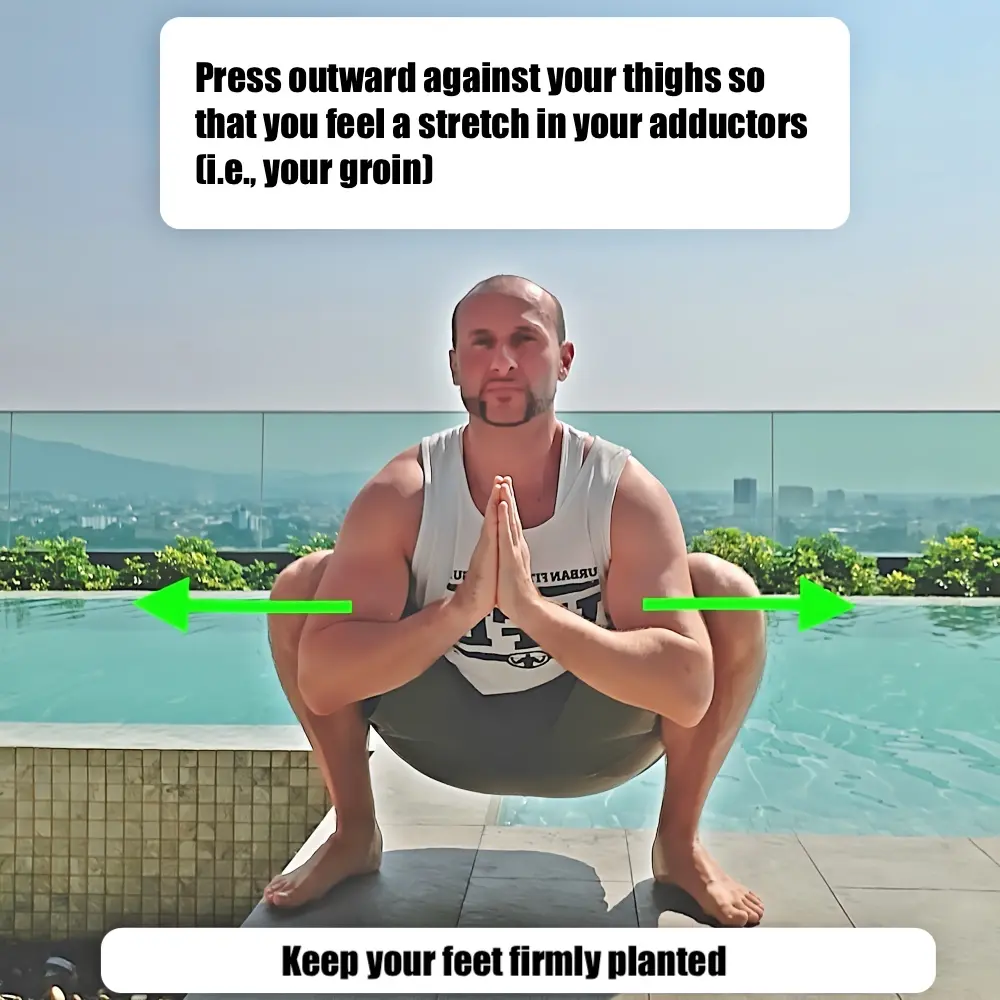
Arms pushing outward
The pressure should then be transferred onto the inner thighs, thereby creating a stretch in the groin and hips.
Try to consciously keep your feet in the same place. They’ll be tempted to start sliding into a deeper outward angle to offset the pressure, but fight back against this so that the force goes into the groin / hip stretch.
Deep Squat Routine #3
Get into a deep squat and place your hands into a prayer position just like in the previous routine.
Really try to position your arms as vertically as possible so that your shoulders touch your ears.
From here, interlock your fingers and make a fake pistol shape. Keeping your hands locked, raise your arms overhead and try to reach for the sky with the tips of your fingers (barrel of your fake gun).
Inhale and let your shoulder blads (scapulae) come down slightly but keep the arms straight and hands interlocked in the fake gun shape. Exhale and reach for the sky again.
Repeat this for 10 slow, deep breaths.
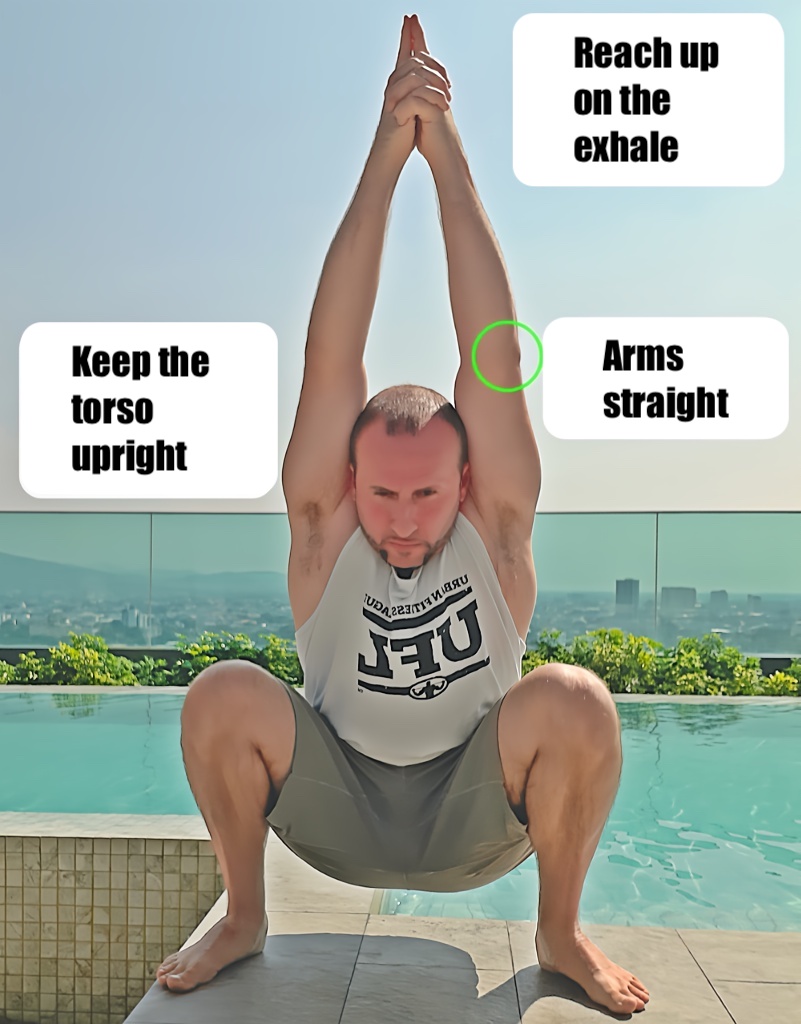
If you have it in you, after the 10 breaths, stay extended and reaching toward the sky but instead of just staying vertical at the torso, start to lean towards one side so that you feel a stretch. This should also follow your breathing. Lean into the stretch on your exhale. Come back to center on your inhale. Do 5 breaths to one said and then repeat to the other side.
Deep Squat Routine #4
Get into a deep squat and place your hands into a prayer position just like in the previous routine. From here, maintain one arm pressed against the inner thigh, but release the other arm. With the released arm, begin to reach up toward the sky while maintaining eye contact with your fist. By looking up, your body will also shift to the side.
The key here is to maintain good posture by not allowing yourself to drastically tilt forward. If you are really tight then this will be challenging to do, but try your best. Fight the urge to tip over as much as possible.
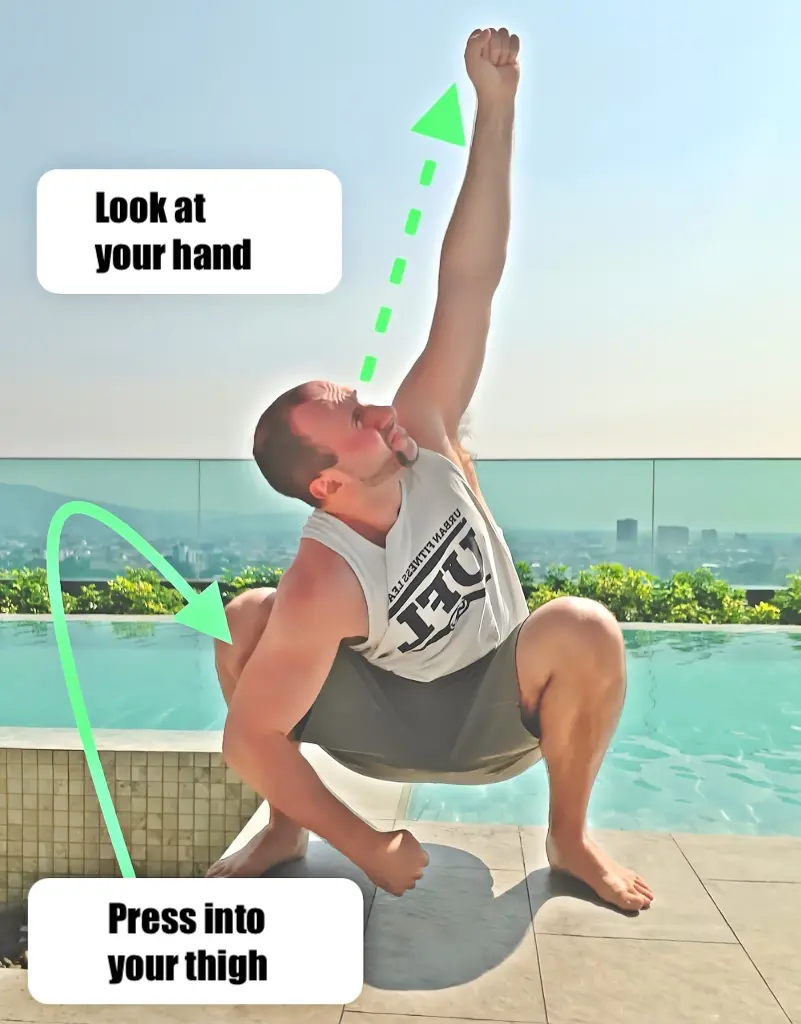
Left arm reaching up
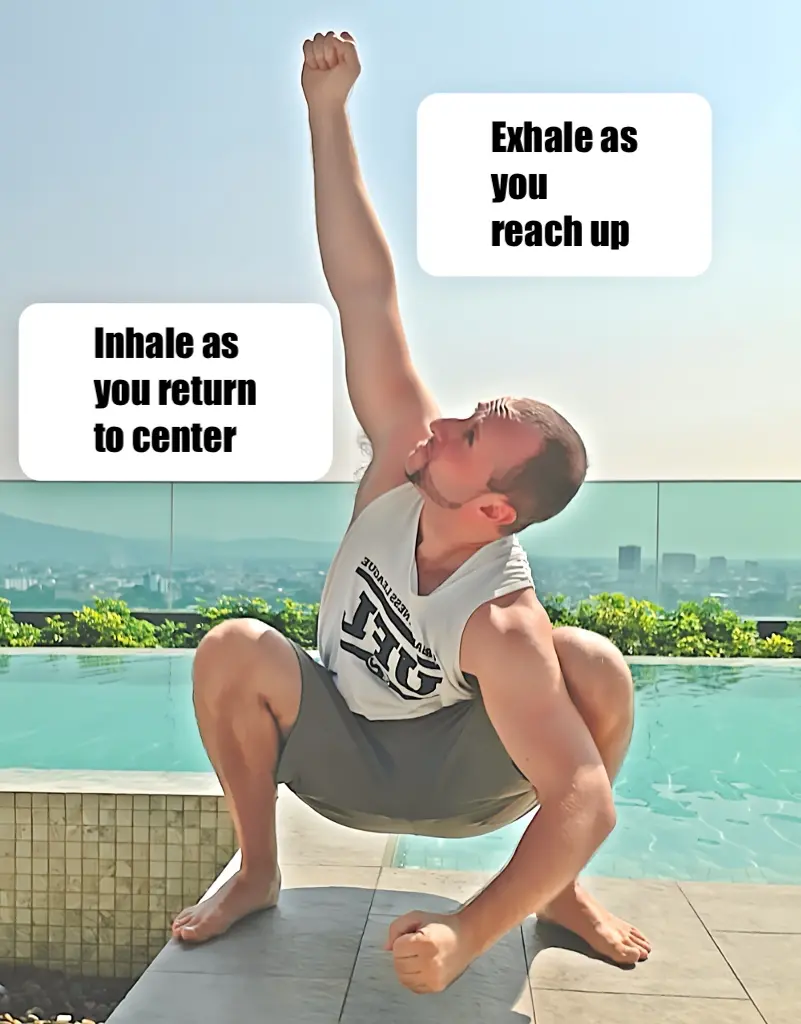
Right arm reaching up
You can hold the reaching up position for time or you can following a rhythmic breathing pattern for reps. If you do the latter, then press into the stretch (bottom arm) and reach up on your exhale. Bring the top arm down and come back to center on your inhale. Do 5 breaths to one side and then repeat to the other side. If you prefer, you can also alternate sides with each inhale / exhale.
The Science Explained
Did you know that yoga interventions can significantly improve deep squat form and functional movement patterns in athletes? You can read the full study for more detail, or get a more digestible overview here. From the study:
39 collegiate athletes participated in an 8-week yoga intervention alongside their regular training, while a control group of 41 athletes received no yoga training.
After eight weeks, the athletes were tested using a Functional Movement Screen (FMS):
While both groups saw improvements, the yoga group showed a significant improvement in deep squat scores, increasing by 65.87% on average, compared to the -2.30% for the control group.
The yoga group also demonstrated a significant reduction in the number of participants with dysfunctional deep squat scores.
Moreover, the overall functional movement quality, including shoulder mobility and trunk stability, improved more for the yoga group, suggesting yoga’s effectiveness in reducing injury risks associated with poor movement patterns.
Final Thoughts
There you have it ladies and gents.
I do recommend spending some regular time in the deep squat if you are able to.
Following the deep squat routines from above is a great way to incorporate it into your own fitness practice, but of course you are free to experiment and do as you like. You’ll notice that if you start doing it at least a few times a week that your back and hips will feel better.
Enjoy!
If you use this guide to achieve your first deep squat, please tag @kalisthenics_nomad and #CalisthenicsNomad in your success post on Instagram. I may even repost it to feature you!
